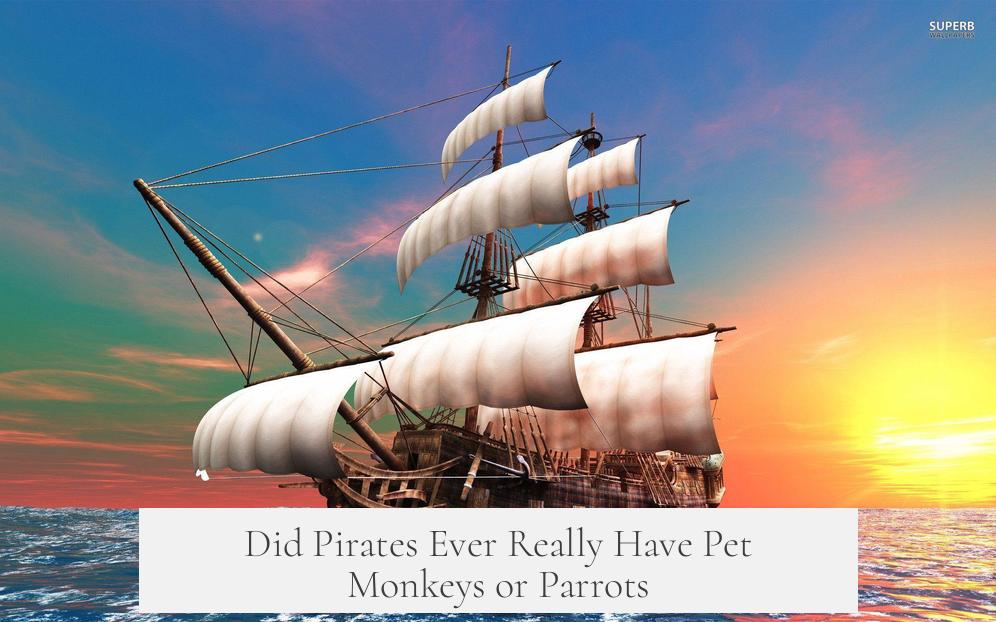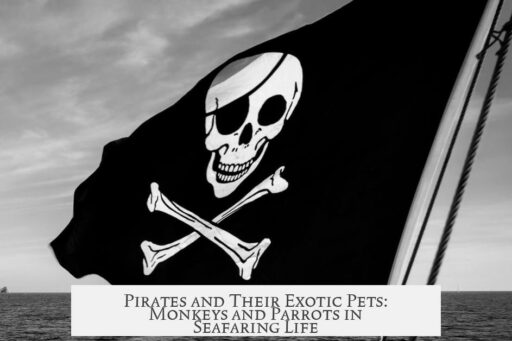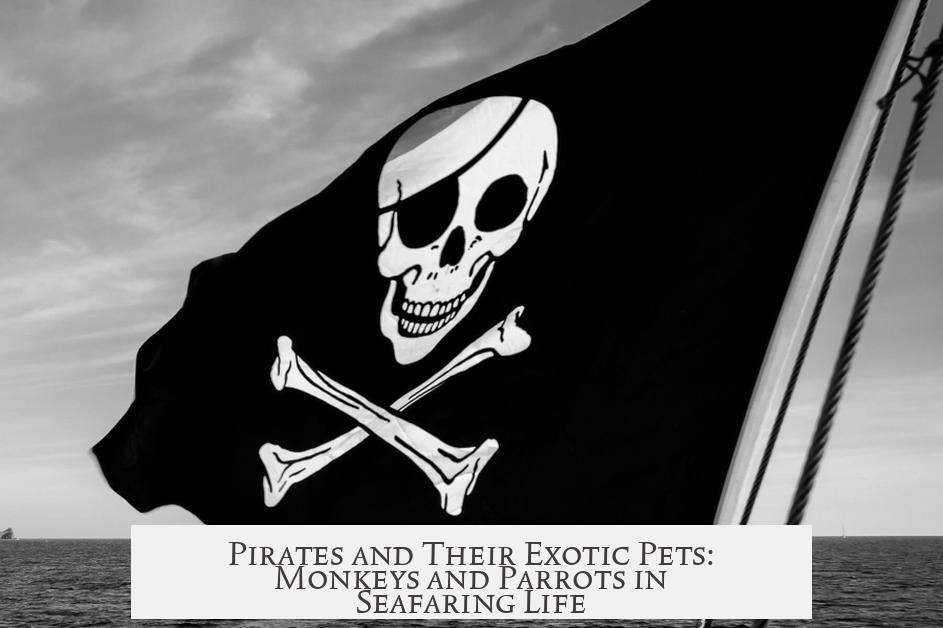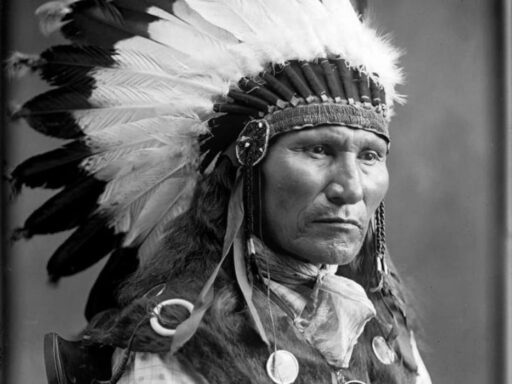Pirates during the golden age of piracy did have pet monkeys, parrots, and other exotic animals. These pets were a part of the larger trade networks pirates engaged in, and such animals sometimes served as cargo or companions on board. Pirates often transported exotic monkeys and parrots seized from raids or acquired through trade. At times, they became attached to these animals, keeping them as pets. The loose social structure and relaxed discipline aboard pirate ships made keeping pets easier compared to merchant or naval vessels, where strict rules prevailed.
Pet parrots and monkeys symbolize the colorful and adventurous pirate image in popular culture. Unlike fictional features like peg legs and hooks, which emerged from novels, plays, and movies, the presence of exotic animals on pirate ships has a basis in reality. The popular idea of pirates with peg legs or hooks is largely a myth. These physical disabilities would have made it difficult to perform essential tasks on a ship, such as climbing rigging and tying knots. Pirates required full mobility to manage sails and navigate. Hence, sustained piracy after severe injury was rare.
On pirate vessels, exotic pets provided entertainment, companionship, and sometimes even trade value after raids. Parrots were especially popular for their ability to mimic human speech, making them sought-after pets. Monkeys were less common but appeared on some ships due to pirates’ contact with tropical ports.
| Aspect | Details |
|---|---|
| Types of pets | Parrots, monkeys, other exotic animals |
| Purpose | Transport cargo; personal pets; trade items |
| Ship type | More common on pirate ships due to lax discipline |
| Myth vs Reality | Pets real, peg legs/hooks fictional and impractical |
- Exotic pets on pirate ships reflected the era’s trade and piracy dynamics.
- Pets were companions and sometimes valuable cargo.
- Physical disabilities like peg legs or hooks would hinder sailing duties.
- Popular pirate stereotypes often mix fact and fiction.
Did Pirates Ever Really Have Pet Monkeys or Parrots?

Yes, pirates truly did have pet monkeys, parrots, and other exotic animals during the golden age of piracy. This fact often surprises many. After all, when you think “pirate,” your mind might jump straight to peg legs and eye patches—not a cuddly monkey perched on the shoulder! But, believe it or not, these exotic pets were more than just Hollywood fluff.
Pirates were, in many ways, connected to the exotic animal trade. They weren’t just fierce seafarers looking for treasure; they also had a role in transporting unusual animals across the seas. Sometimes these animals were destined to be sold on distant markets. Other times, pirates grew fond of their animal companions and kept them on board as pets.
The relaxed and less formal atmosphere on pirate ships made them more pet-friendly than the rigid navy or merchant vessels. These other ships often demanded strict discipline and focused solely on their missions, so animals were rarer. Pirates, however, enjoyed a looser code of conduct that allowed for such luxuries, including the keeping of pets.
Exotic Pets: More Common Than You Think
Imagine a pirate ship in the Caribbean bustling not just with swashbuckling rogues but also the chittering of monkeys and the squawking of parrots. These animals were native to tropical regions where pirates plied their trade. That proximity made it easier and more tempting to keep such pets.
Monkeys and parrots also symbolized the very exoticism and adventure people associate with pirate lore. They added color and life to the grim world of piracy. Pirates weren’t just marauders; sometimes, they were collectors and caretakers too.
Parrots, in particular, make perfect shipboard companions. They can mimic voices and sounds, which makes them interesting conversationalists—if only the crew could understand them! Monkeys brought mischief and entertainment, perfectly suiting the unpredictable nature of pirate life. They weren’t mere props; these animals shared the cramped quarters and endless sea voyages alongside their human caretakers.
Setting the Record Straight: Myths Versus Reality
While pets like parrots and monkeys were real aboard pirate ships, many other parts of pirate myth don’t hold up under scrutiny. Consider peg legs and hooks. These iconic pirate symbols come from fiction rather than fact. Long John Silver’s peg leg and Captain Hook’s iron hand originate from Robert Louis Stevenson’s “Treasure Island” and J.M. Barrie’s “Peter Pan,” respectively.
Here’s an ironic twist: actual pirates avoided keeping serious injuries that would limit their mobility. Navigating riggings, tying knots, manning cannons—these tasks require agility and two hands. A peg leg or hook hand would have made active pirating extremely difficult, if not impossible. When pirates lost limbs or eyes, they typically couldn’t continue their dangerous lifestyle. Pirate codes even included compensation for such losses, recognizing that these injuries meant lost earning capacity.
Interestingly, the positions held by these fictional pirates with physical disabilities were roles requiring less physical labor—Silver was a ship’s cook; Hook was the captain, overseeing rather than performing hands-on duties. This contrast highlights the difference between dramatized pirate stories and historical realities.
Why Does This Matter? Understanding Pirate Life Through Their Pets
Knowing that pirates had pet monkeys and parrots provides a richer, more nuanced picture of life at sea in the 17th and 18th centuries. It reminds us pirates weren’t just ruthless criminals; they were people seeking companionship, amusement, and perhaps a connection to exotic lands.
This detail about pets is drawn from scholarly sources like A History of Piracy by Philip Gosse, which digs beyond stereotypes to reveal the lived experience of pirates. These animals weren’t just fanciful Hollywood inventions—they were tangible parts of pirate culture.
So next time you picture a pirate, consider not just the cutlasses and cannon fire but also the chatter of a parrot or the playful antics of a monkey. These creatures were witnesses to countless voyages, storms, and battles. They shared the hardships and the freedom of pirate life.
Final Thoughts: What Can We Learn From Pirate Pets?
- Keeping exotic pets was a real part of pirate life, made possible by their trade routes and more relaxed ship rules.
- Pets provided comfort and companionship on long, grueling voyages.
- Many pirate myths—like peg legs and hooks—are fictional, crafted for entertainment rather than historical accuracy.
- Pirates needed physical agility; serious injuries often ended their careers.
- Parrots and monkeys symbolize pirates’ connections to the tropics and their adventurous lifestyles.
So, while peg legs and eye patches belong more to storybooks than history books, monkeys and parrots definitely sailed the seven seas—not as mere props, but as living parts of pirate crews. Now, doesn’t that give a fresh twist to the classic pirate image?




